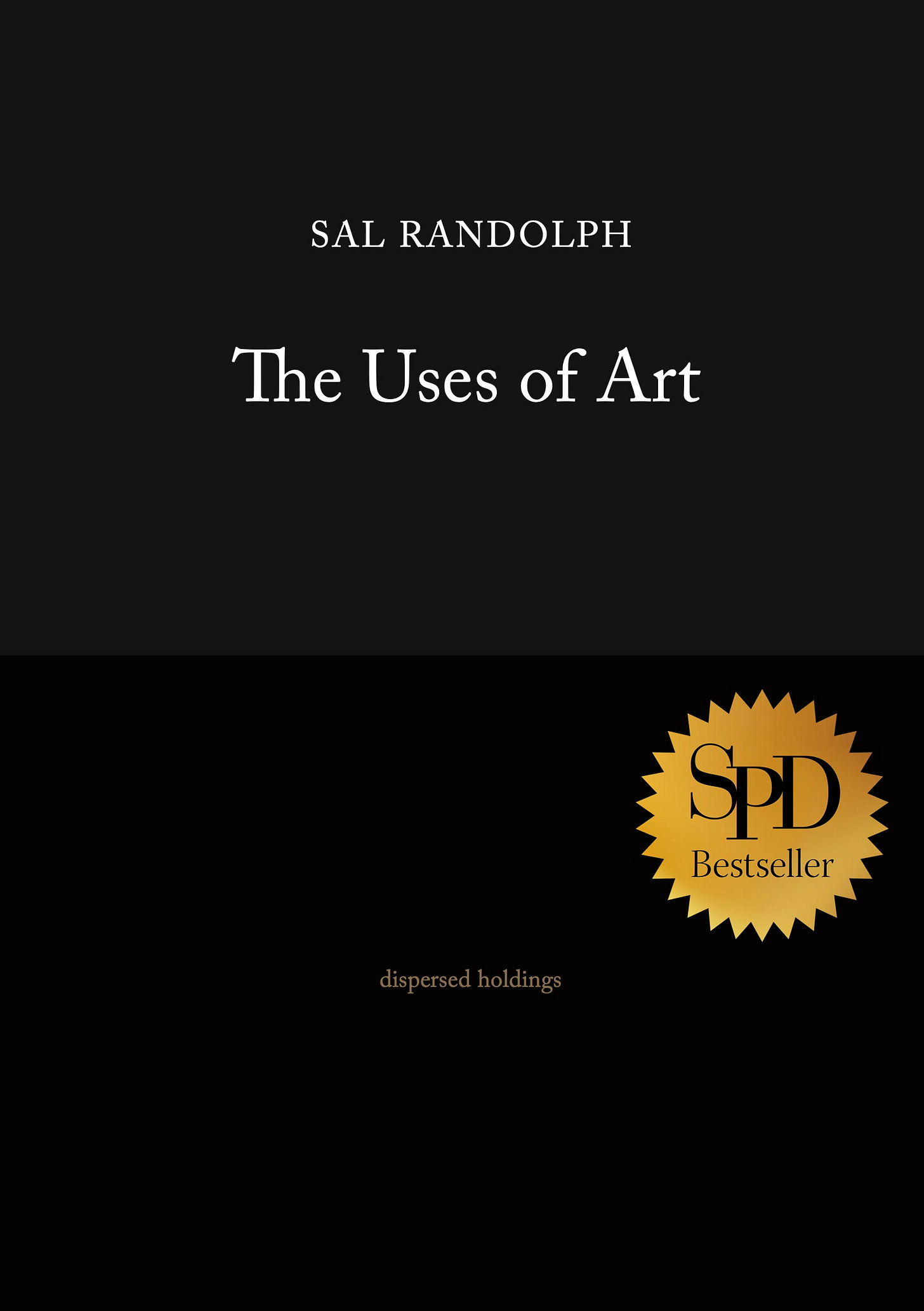
Dear Friends,
This is the fourth installment of “Ways of Seeing,” a series of inspirations and practical exercises for deepening attention and engaging with art.
You most likely know, or know of, the poet Audre Lorde’s powerful statement, “The Uses of the Erotic: The Erotic As Power.” I’ve been reading her work since the eighties, and every time I come back to this essay it surprises me. It is a powerful, deeply political document, at once beautiful and revolutionary.
She says, “In touch with the erotic, I become less willing to accept powerlessness, or those other supplied states of being which are not native to me, such as resignation, despair, self-effacement, depression, self-denial.”
What would it mean to take inspiration from this orientation to the world?
This exercise encourages you to try out an erotic relation to a work of art and to yourself, and to consider what ways that relation changes you and changes the world.
— Sal
The Uses of the Erotic: The Erotic as Power
Here’s an excerpt from Audre Lorde’s essay, “The Uses of the Erotic: The Erotic as Power,” first presented in 1978:
The very word erotic comes from the Greek word eros, the personification of love in all its aspects—born of Chaos, and personifying creative power and harmony. When I speak of the erotic, then, I speak of it as an assertion of the lifeforce of women; of that creative energy empowered, the knowledge and use of which we are now reclaiming in our language, our history, our dancing, our loving, our work, our lives.
[…]
Beyond the superficial, the considered phrase, “It feels right to me,” acknowledges the strength of the erotic into a true knowledge, for what that means is the first and most powerful guiding light toward any understanding. And understanding is a handmaiden which can only wait upon, or clarify, that knowledge, deeply born. The erotic is the nurturer or nursemaid of all our deepest knowledge.
The erotic functions for me in several ways, and the first is in providing the power which comes from sharing deeply any pursuit with another person. The sharing of joy, whether physical, emotional, psychic, or intellectual, forms a bridge between the sharers which can be the basis for understanding much of what is not shared between them, and lessens the threat of their difference.
Another important way in which the erotic connection functions is the open and fearless underlining of my capacity for joy. In the way my body stretches to music and opens into response, hearkening to its deepest rhythms, so every level upon which I sense also opens to the erotically satisfying experience, whether it is dancing, building a bookcase, writing a poem, examining an idea.
[…]
Our erotic knowledge empowers us, becomes a lens through which we scrutinize all aspects of our existence, forcing us to evaluate those aspects honestly in terms of their relative meaning within our lives. And this is a grave responsibility, projected from within each of us, not to settle for the convenient, the shoddy, the conventionally expected, nor the merely safe.
Exercise: The Uses of the Erotic
Begin by simply looking at the work.
What colors and forms do you naturally respond do?
What pleasures do you and the work share?
In your imagination, make a gesture towards the work. Allow the work to respond with its own gesture. Go back and forth like that until you reach a sense of satisfaction and fullness.
Where does the erotic reside in the work? In yourself? What does it have to tell you?
What kind of power do you discover in the erotic?
Take notes, free-write, or share your responses with a friend.
“The Uses of the Erotic: The Erotic as Power” began as a paper presented at the Fourth Berkshire Conference on the History of Women, Mount Holyoke College, August 25, 1978, and was later included in Audre Lorde’s collection of essays Sister Outsider.
Listen to Audre Lorde read “The Uses of the Erotic: The Erotic as Power”
Further adventures and new ways of seeing can be found in my book, The Uses of Art.
Artist Sal Randolph’s THE USES OF ART is a memoir of transformative encounters with works of art, inviting readers into new methods of looking that are both liberating and emboldening.
Dazzlingly original, ferociously intelligent.
— Michael Cunningham
A joyful, dazzling treasure-box of a book.
— Bonnie Friedman
Here’s a guide, to waking up, over and over again.
— Roshi Pat Enkyo O’Hara





